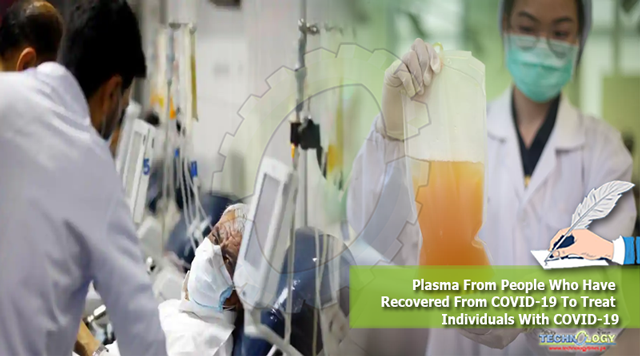We needed to know whether plasma from individuals who have recuperated from COVID-19 is a viable treatment for individuals with COVID-19 and whether this treatment brings on any undesirable impacts.

Plasma Coronavirus (COVID-19) is an exceptionally irresistible respiratory sickness brought about by another strain of the infection. The flare-up has spread quickly on a worldwide scale. Individuals contaminated with this infection may not give indications of the illness, others may create manifestations, including fever, hack, brevity of breath, and sore throat. In certain individuals the disease is increasingly serious and can cause extreme breathing challenges, prompting hospitalization, admission to escalated care, or passing. Right now, no immunization or explicit treatment is accessible.
Individuals who have recouped from COVID-19 create characteristic resistances to the sickness in their blood (antibodies). Antibodies are found in part of the blood called plasma. Plasma from blood gave from recuperated patients, which contains COVID-19 antibodies, can be utilized to make two arrangements. Right off the bat, recovering plasma, which is plasma that contains these antibodies. Also, hyperimmune immunoglobulin, which is increasingly focused, and along these lines contains more antibodies. Gaining strength plasma and hyperimmune immunoglobulin have been utilized effectively to treat other respiratory infections. These medicines (given by a dribble or infusion) are commonly all around endured, yet undesirable impacts can happen.
What did we need to discover?
We needed to know whether plasma from individuals who have recuperated from COVID-19 is a viable treatment for individuals with COVID-19 and whether this treatment brings on any undesirable impacts.
Our techniques
We scanned significant clinical databases for clinical investigations on treatment with gaining strength plasma or hyper immune immunoglobulin for individuals with COVID-19. Studies could be led anyplace on the planet and incorporate members of all ages, sex, or ethnicity, with gentle, moderate, or serious COVID-19.
COVID-19 is spreading quickly, so we expected to respond to this inquiry rapidly. This implied we abbreviated a few stages of the ordinary Cochrane Audit process – just one survey creator removed information from contemplates and evaluated study quality; typically two audit creators would do this.
Key outcomes
We included eight finished investigations, with 32 members who got gaining strength plasma. None of the examinations arbitrarily allotted members to various medicines (randomized preliminaries produce the best proof). None of the examinations incorporated a gathering of individuals who didn’t get recovering plasma, as a correlation gathering.
All members in the examinations were alive toward the finish of development, yet not all had been released from the emergency clinic. Follow-up changed from 3 to 37 days after treatment with gaining strength plasma.
Six investigations utilized the degree of breathing help that members required as a proportion of recuperation. Breathing help included oxygen treatment, mechanical ventilation, and the requirement for an extraordinary machine that oxygenates the blood. Each of the six investigations detailed clinical improvement in probably a portion of their members, however it stays questionable whether this improvement was identified with gaining strength plasma, another treatment, or the regular movement of the malady.
Six investigations announced opportunity to release from medical clinic for a portion of their members, every one of whom got recuperating plasma. An opportunity to release went from 4 to 35 days after improving plasma treatment.
Six investigations included members with serious COVID-19. Most had improved at the last development, yet this improvement may have been because of another treatment, the characteristic movement of the sickness, or gaining strength plasma treatment.
Two members announced undesirable impacts identified with recovering plasma. One member built up a fever, and a subsequent member experienced anaphylactic stun (extreme unfavorably susceptible response) right off the bat in the transfusion.
Assurance of the evidence
Our sureness (trust) in the proof was restricted in light of the fact that the examinations were not randomized and didn’t utilize solid strategies to gauge their outcomes. Moreover, they had just few members, who got different medicines close by gaining strength plasma, and some had basic medical issues.
Conclusion
We are extremely unsure whether plasma from individuals who have recuperated from COVID-19 is a successful treatment for individuals with COVID-19. The finished investigations we discovered were low quality and their outcomes could be identified with the regular movement of the illness, different medicines that the members got, or to gaining strength plasma. Notwithstanding, our quests discovered 48 continuous examinations: 47 assessing gaining strength plasma and 1 assessing hyperimmune immunoglobulin, of which 22 are randomized. We will refresh this audit with their outcomes when these examinations are finished.
